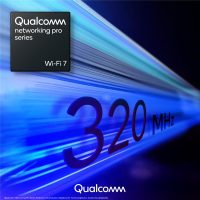(Auszug aus der Pressemitteilung)
SAN JOSE, CA – May 17, 2006 – Samsung Electronics Co., Ltd., the world
exhibiting the first commercial prototype of a Hybrid Hard Disk (HHD),
the much-anticipated next generation hard drive for notebooks and PCs
that integrates NAND flash memory with rotating magnetic storage. The
HHD will be exhibited with two cache densities, 128MB and 256MB, at the
Windows Hardware Engineering Conference (WinHEC) in the Seattle, WA
Conference Center (Samsung booth #419) May 23-24, 2006.
“We see the HHD as the most advanced and cost-effective means of
improving the performance of a notebook computer’s storage
functionality,” said Jon Kang, senior vice president, technical
marketing group, Samsung Semiconductor. “The Samsung HHD addresses the
two biggest consumer desires: extending battery life and improving boot
and resume performance.”
The hybrid storage device leverages the benefits of both magnetic and
solid state storage without compromising the cost of the computer
housing it.
The high densities of magnetic storage technology are preserved, while
the exceptionally low power, high reliability and fast read/write access
of advanced NAND flash technology enhance overall value at minimal
additional cost. With an HHD, consumers receive a system that boots or
resumes up to twice as fast as conventional HDDs, lasts 20-30 minutes
longer on battery and is up to five times more reliable.
“Hybrid hard disks and Windows ReadyDrive Technology are integrated
advancements that improve the performance and reliability of computers
using Windows Vista, especially notebook computers,” said Mike Sievert,
corporate vice president, Windows Client Marketing at Microsoft. “We are
very pleased to see Samsung moving so rapidly with HHD technology to
prepare for high-volume production in time for the Windows Vista
launch.”
The Hybrid Hard Disk eliminates the need for the hard disk to constantly
spin whenever a computer is operating on battery power, and is less
susceptible to damage from jarring or being dropped since it is idle
most of the time.
Every time the cache is filled, the rotating drive spins to “flush out”
or transfer data from the cache, spinning only a few seconds every 10-20
minutes. The Samsung HHD architecture uses the fastest flash device on
the market as cache, Samsung’s OneNAND flash with 108MB/s read and 18
MB/s write data-rates. The functionality of the H-HHD is automated by
the high performance HDD SOC which supports 3.0G Native Command Queuing
SATA and an OneNAND interface. The HHD saves between eight and 25
seconds of boot-up time and extends battery life by about 8-10 percent
depending on the model of computer.
In addition, the HHD allows PC manufacturers to deploy value-added
features, such as direct media experiences with instant-boot
functionality and accelerated processing for specified applications.
Samsung will sample its HHD with customers beginning next quarter and it
will ship in large quantities by January, in conjunction with the
Windows Vista rollout.





Neueste Kommentare
19. April 2024
17. April 2024
17. April 2024
5. April 2024
23. März 2024
22. März 2024